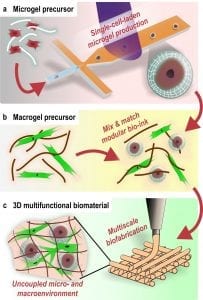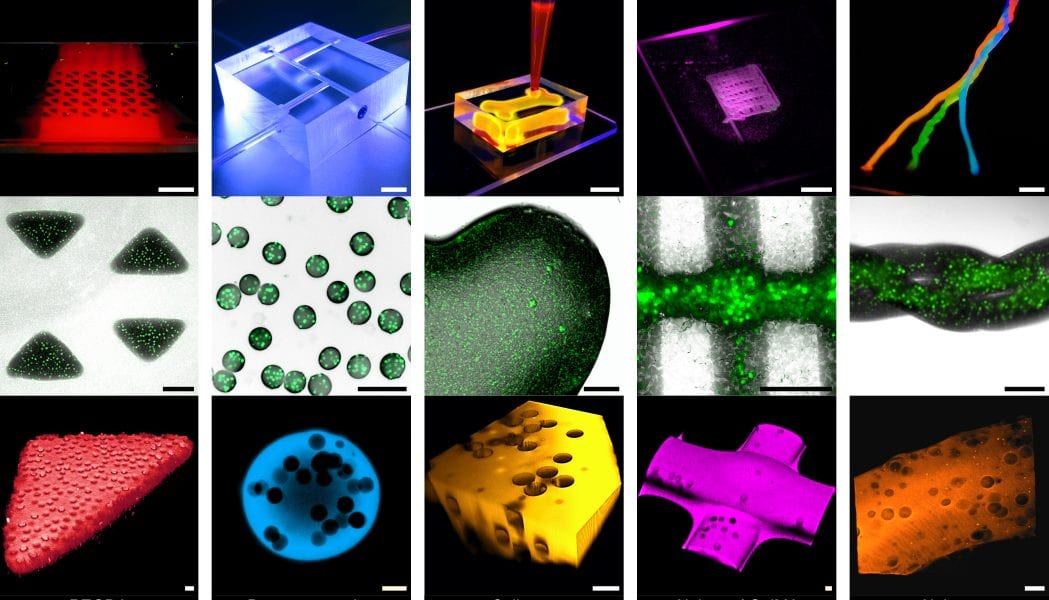Wouldn’t it be cool to construct 3D tissues from tiny bricks of single cells? A collaborative project between the University of Twente and MIT demonstrates an approach for creating building blocks with single cell resolution for modular tissue engineering.
In the past decades, many significant improvements in biomimetic tissue engineered materials have occurred. However, for a material to truly mimic native tissue, it should possess multiscale modular design. Although single-cell-laden microgels that meet this requirement have been reported, their large size results in the insufficient encapsulation of the cells and renders them inadequate for use in tissue engineering applications.

To solve this problem, Karperien, Leijten and co-workers, together with the Khademhosseini lab, have developed a cell encapsulation technique combining droplet microfluidic technology with dual crosslinking. A variety of primary cells can be encapsulated into microgels with diameters as small as 35 μm yielding almost pure encapsulation yield. These microgels are then incorporated into injectable macrogels in a mix-and-match manner to prepare a modular bioink. It is possible to biofabricate 3D constructs with this bioink using a number of commonly used techniques, including 3D printing, photolithography, wet spinning and fiber weaving. Since the microenvironment of the cells and the macroenvironment of the material can be optimized individually with this approach, the as-prepared materials could be applied for vessel growth while being immunoprotected.
This modular bioink-based approach provides great promise in clinically effective tissue engineering applications, because of the high-throughput, biomimetic and versatile nature of the process. For more details, check out the article in Advanced Healthcare Materials.

















